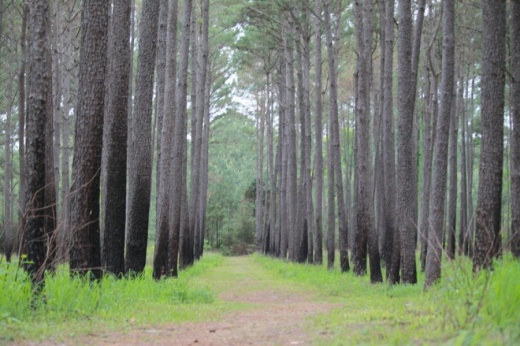Also known as a memorandum of understanding, the agreement establishes a framework for federal and state agencies including the U.S. Department of Agriculture's Forest Service and Natural Resources Conservation Service, the Texas Parks & Wildlife Department and the Texas A&M Forest Service while building on the work of the Texas Forestry Council.
"This agreement strengthens the already strong partnership between the Forest Service and the State of Texas," Perdue said in a statement. "Through shared stewardship, Texas and the Forest Service will work together to identify landscape-scale priorities and build capacity to improve forest conditions."
According to the July 16 news release, the agreement will focus on encouraging strong, long-term forest management programs, promoting sound and scientific silvicultural practices, and aligning various agency land management activities to meet common goals.
"Generations of Texans have prioritized the responsible stewardship of our forest lands, and I am grateful to Secretary Perdue and this administration for their commitment to preserving this legacy," Abbott said in a statement. "This agreement is an important step toward strengthening our partnership with the federal government and renewing our commitment to responsible forest management. Working together, I am confident we will achieve the goals of this shared stewardship agreement and ensure a brighter future for the state of Texas."
Similarly, on July 15 the Bureau of Ocean Energy Management, the Army Corps of Engineers Galveston District and the Texas General Land Office entered into a memorandum of understanding to address coastal restoration in Texas. According to a July 15 news release, the effort intends to streamline Gulf of Mexico sediment resource identification for Texas coastal protection and restoration projects and plans.
"By working together our agencies will be able to better serve the people of the Texas Gulf Coast through expediting the identification and distribution of significant sediment resources thus resulting in enhanced coastal resiliency and reduced risk to coastal assets," said Mike Celata, BOEM's Gulf of Mexico Office regional director, in a statement.
According to the news release, rising sea levels, land subsidence and reduced sediment are resulting in the loss of beach, dune and wetland systems that act as a storm buffer to the Texas mainland, reducing the effectiveness of coastal features to protect people and land from future storms.
"The longevity of our beaches is crucial to the Texas coast," said Mark Havens, Texas GLO deputy land commissioner, in a statement. "As erosion continues to diminish the size of our beaches, renourishment is essential to stabilize critical areas, protect private and public property, and provide added protection from the impacts of coastal storms and high tides."
Following the memorandum, a framework will be developed to collect and share data to optimize engineering, economic and environmental criteria by matching potential sediment sources with future restoration projects and post-construction renourishment requirements, the release states.
"Working together with BOEM and GLO is key to our integrated plan for coastal resilience," said Col Timothy Vail, commander of the Army Corps of Engineers Galveston District, in a statement. "Our agencies are working together to increase our understanding of existing data on sand resources, while at the same time identifying information gaps that we can work together to close. Each agency on this [memorandum of understanding] has a significant role to play as we prepare for future large-scale restoration projects. Understanding the nature of coastal materials is critical to the success of those projects."





